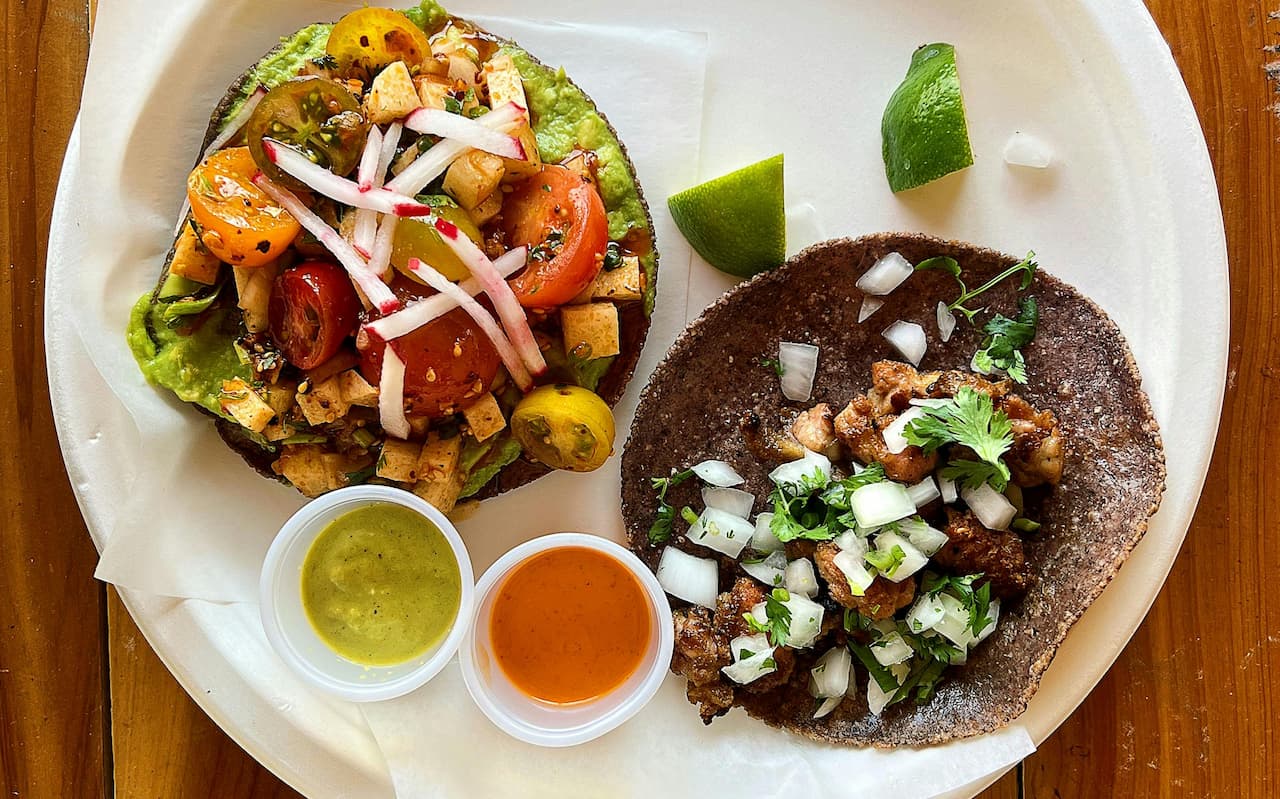Exploring Regional Flavors: A Culinary Journey Across America’s Hidden Food Gems
The United States boasts a rich tapestry of culinary traditions, many of which remain hidden gems within their regions. This journey across America’s regional flavors unveils unique dishes that tell the stories of their local cultures, ingredients, and history.
New England: Clam Chowder and Lobster Rolls
New England is renowned for its seafood, particularly clam chowder and lobster rolls. “The creamy, hearty texture of New England clam chowder, with its fresh clams and potatoes, embodies the region’s maritime heritage,” says chef Martha Jones. Lobster rolls, served with tender lobster meat on a toasted bun, are a summertime favorite along the Maine coast.
The Midwest: Hotdish and Fried Cheese Curds
The Midwest offers comforting, home-cooked meals, with hotdish and fried cheese curds as standout examples. “Hotdish, a casserole combining meat, vegetables, and a starch like tater tots, is a staple at community gatherings,” explains food historian Mark Larson. Fried cheese curds, particularly popular in Wisconsin, are known for their crispy exterior and gooey interior, often enjoyed at county fairs and local diners.
The South: Shrimp and Grits and Hoppin’ John
Southern cuisine is deeply rooted in tradition, with dishes like shrimp and grits and Hoppin’ John showcasing its diversity. “Shrimp and grits, originating from the Lowcountry, combines creamy grits with succulent shrimp, creating a dish that is both rustic and refined,” notes James Green from ricky casino online. Hoppin’ John, a blend of black-eyed peas, rice, and pork, is a New Year’s staple believed to bring good luck.
The Southwest: Hatch Green Chile and Sonoran Hot Dogs
The Southwest is a melting pot of flavors, with influences from Mexican cuisine. “Hatch green chile, a spicy and flavorful pepper, is a key ingredient in many New Mexican dishes, adding a distinctive heat,” says culinary expert Maria Hernandez. Sonoran hot dogs, popular in Arizona, feature a bacon-wrapped frankfurter topped with beans, onions, tomatoes, and jalapeños, reflecting the region’s fusion of American and Mexican tastes.
The Pacific Northwest: Geoduck and Marionberry Pie
The Pacific Northwest’s culinary offerings are as diverse as its landscapes. “Geoduck, a large, meaty clam, is prized for its sweet flavor and is often served raw or lightly cooked in fine dining establishments,” describes seafood specialist Robert Lee. Marionberry pie, made from a type of blackberry unique to Oregon, showcases the region’s rich agricultural heritage with its sweet and tangy filling.
The Mid-Atlantic: Scrapple and Smith Island Cake
The Mid-Atlantic region, with its blend of coastal and inland influences, offers unique dishes like scrapple and Smith Island cake. “Scrapple, a breakfast staple made from pork scraps and cornmeal, is a nod to the region’s frugal, resourceful roots,” explains food writer Susan Green. Smith Island cake, a multi-layered cake with fudge icing, is Maryland’s official state dessert, celebrated for its rich flavor and historical significance.
California: Mission-Style Burritos and Santa Maria Barbecue
California’s cuisine reflects its diverse population and agricultural abundance. “Mission-style burritos, originating in San Francisco, are known for their large size and filled with a variety of ingredients like rice, beans, meat, and salsa,” says chef Carlos Martinez. Santa Maria barbecue, a tradition in Central California, features tri-tip beef seasoned with a simple rub and grilled over red oak, creating a smoky, flavorful dish.
The Role of Local Ingredients
Regional dishes often highlight local ingredients, emphasizing the importance of sustainability and freshness. “Using locally sourced ingredients not only supports local farmers but also ensures that the dishes have the freshest flavors possible,” says farm-to-table advocate Laura Bennett. This commitment to local produce and traditional methods keeps regional cuisines authentic and vibrant.
Preserving Culinary Heritage
Preserving regional culinary traditions is essential for maintaining cultural heritage. “Sharing and celebrating these dishes helps keep our diverse food heritage alive for future generations,” emphasizes cultural anthropologist Emily White. Community events, food festivals, and local markets play a vital role in promoting and preserving these unique flavors.
Exploring America’s hidden food gems offers a taste of the country’s rich and diverse culinary landscape. From New England’s seafood to California’s fusion cuisine, each region’s unique dishes tell a story of local culture, history, and ingredients. By embracing and celebrating these regional flavors, we not only preserve culinary traditions but also support local communities and sustainable practices. As you journey across the United States, take the time to savor these hidden gems and discover the rich tapestry of American cuisine.
